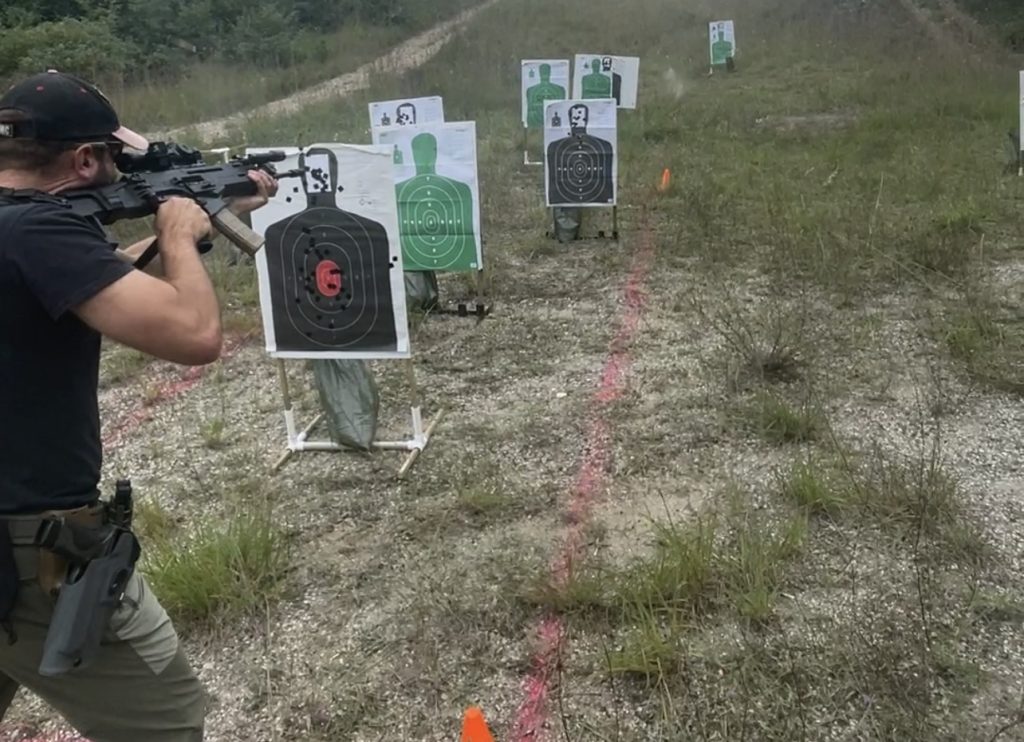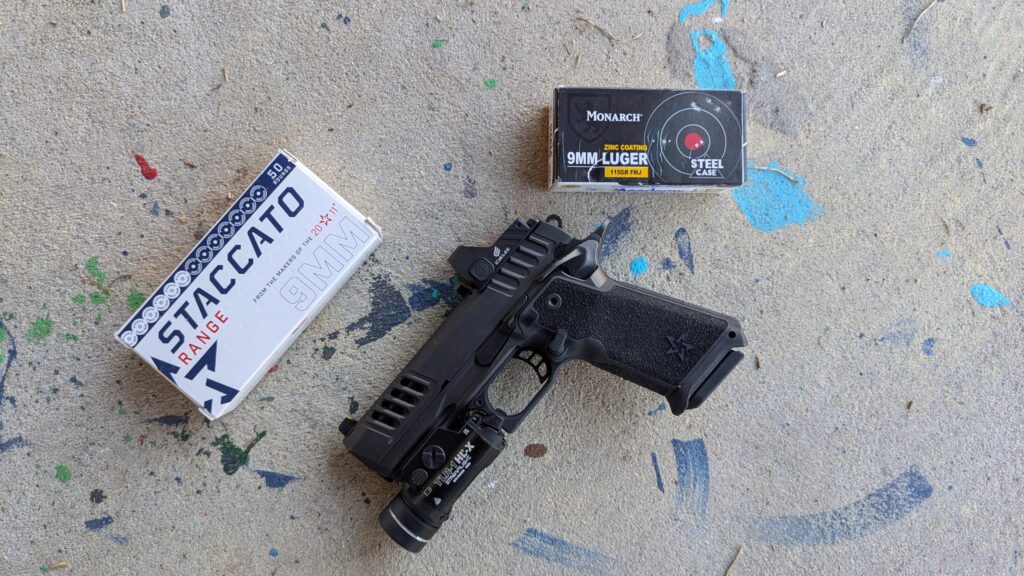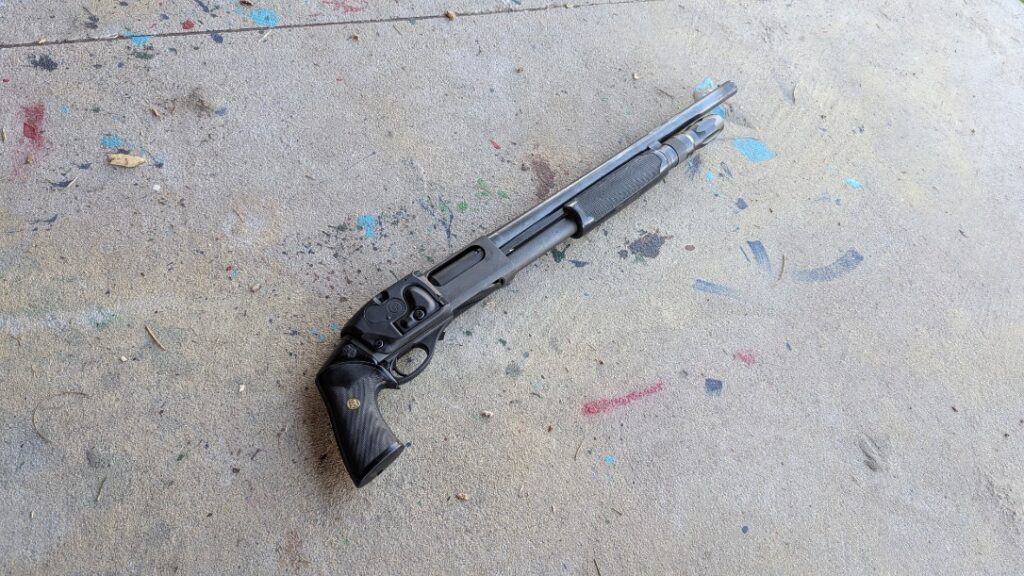This is more of an initial impressions piece than a full on review, but review is what people search, and search engines need keywords, so here we are. The IWI Carmel review, ten magazines in.
IWI began shipping the Carmel this past month, August 2023, and the rifle has been popping up around social media circles and in both the store and hand as the first several thousand units hit the distribution streams.
What is the Carmel?

Advertisement — Continue Reading Below
The Carmel is a competitor to rifles like the SCAR and ACR. It was developed in that late 2000’s and 2010s turn-of-the-century timeframe and the design philosophy and its international intent is reflected in the design choices. Shorter handguards for shorter barrels, differences in sling mounts, gas settings, etc.
If it looks like the FN SCAR, Bushmaster/Remington ACR, and HK433, that is because it was meant to compete with them inside and out.
It was first “leaked” to the world in 2019 at LAAD in Brazil, the US Market got hungry for it and… there were no plans on the table to bring it to the US. The international division was then baffled as to why the US Market wanted their cool new carbine. Sure it was cool. Sure it was new. Sure it was a carbine, even. But what about those traits spoke to a market in the United States that is ravenous for cool, new, high quality 5.56 carbines?
Advertisement — Continue Reading Below
Who could guess. We may never know.
Snark about understanding the US market aside, the IWI US Team knew and quickly moved to remedy the situation. Which was not easy…
Getting into the weeds on getting items approved for import with the ATF would be a whole lotta (this is a specific measurement of effort) sighing and frustration, sufficient here to say the original version and several modified versions of the original version weren’t cutting it with ATF, because they have a silly rulebook full of silly scoring metrics for imported firearms. The rules are made up and the points don’t matter.
Advertisement — Continue Reading Below
Except when ATF says no, no it is.
So a United States specific variant was designed and produced. It is the full production model and the only one available.

Advertisement — Continue Reading Below
With the production update, engineers took the opportunity to input some product improvements and features that the US Market specifically enjoys and move the design forward. The US variant has a marked increase in accuracy over the original international thanks to a redesigned and improved receiver/barrel interface. Gone too is the ‘quick change’ fad of the late 2000’s and early 2010’s, what a silly thing that was. Quick change at the ‘armorer’ level is very different than at the ‘operator’ level, yes a lot of us at home are both but we want the ease at the armorer level.
The barrel is still simple and easy for an armorer to change with a torque wrench and proper bits, but thankfully we’ve shelved the obsession with needing it on demand, on the fly, in the field. What a weird time. Literally nobody needed that.
Anyway, back to the Carmel. The handguard was lengthened and brought to M-LOK standard to conform more to modern barrel and ancillary standards. It will still be able to take a chopped or shorter barrel in the future. The lower receiver was modified to take AR pattern grips and comes with one of my favorites, the B5 Systems. Quick detach points for a sling replaced some of the HK/Cord hard points and an M-LOK QD point is included for the handguard, bringing the sling point total to five. Four fixed points, two mirrored QD on the receiver and two mirrored hooks on the stock, and one M-LOK QD placed by the operator or armorer.
Advertisement — Continue Reading Below
Finally, the gas system on the 16″ CHF chrome-lined and floated barrel was simplified from the three position of the original into a two position, suppressed and normal operation. Time and experience indicate that having an ‘adverse’ gas setting breaks more rifles through increased wear than tear (and accidently selecting it) than it has saved lives by allowing a sluggish rifle to function. The near universal standard for the modern piston gun is to over gas the ‘normal’ operating setting just a small amount and accept the mild increase in recoil in exchange for absurdly boring levels of reliability with almost all ammunition. The US Carmel also foregoes iron sights, as the US Market is extremely preferential on our optic suites.
The Carmel retains the fully ambidextrous control suite, the tool-less quick reverse charging handle, and the folding stock design with its multi-position length of pull and cheek comb height. The muzzle device is in classic IWI fashion, with a torqued counter nut, and replacing and timing a suppressor host or personal preference of muzzle device is simple.
That’s the new US variant.
Advertisement — Continue Reading Below
Add sight.
Add sling.
Go to work.
Advertisement — Continue Reading Below
So I did.
Shooting the new Carmel

I zeroed it up with a simple adjusted 25/100 for the Primary Arms PLXc and the offset EPS at 50. I haven’t confirmed at 100 and beyond yet but that will come later. It was sufficient for the short distance drills I was planning to run.
Advertisement — Continue Reading Below
A few magazine changes, a few target transitions, a few soft and hard stoppages clearances and I was quite satisfied with how the Carmel was performing ergonomically. It out of the box was offering me the feel and flexibility of rifles I had to tune up a bit with parts swaps. None of that here.

Next I brought it out to an informal range session with some veteran friends. They’re drilling up for the Michigan Governor’s 20 match and we used the opportunity to run some structured practice. Shooting faster under time and distance standards brought the real mettle of this carbine out and it is rapidly solidifying my opinions from handling the prototypes.
This thing slaps. The Carmel is every bit of the uncomplicated, reliable, and accommodating fighting rifle I expect from IWI US. It is holding its own against every premium current Gen 5.56 NATO carbine being offered, with comparable or superior features as factory standard.
The price tag is legit too, saving between 20-100% of its sticker against competitive offerings.















